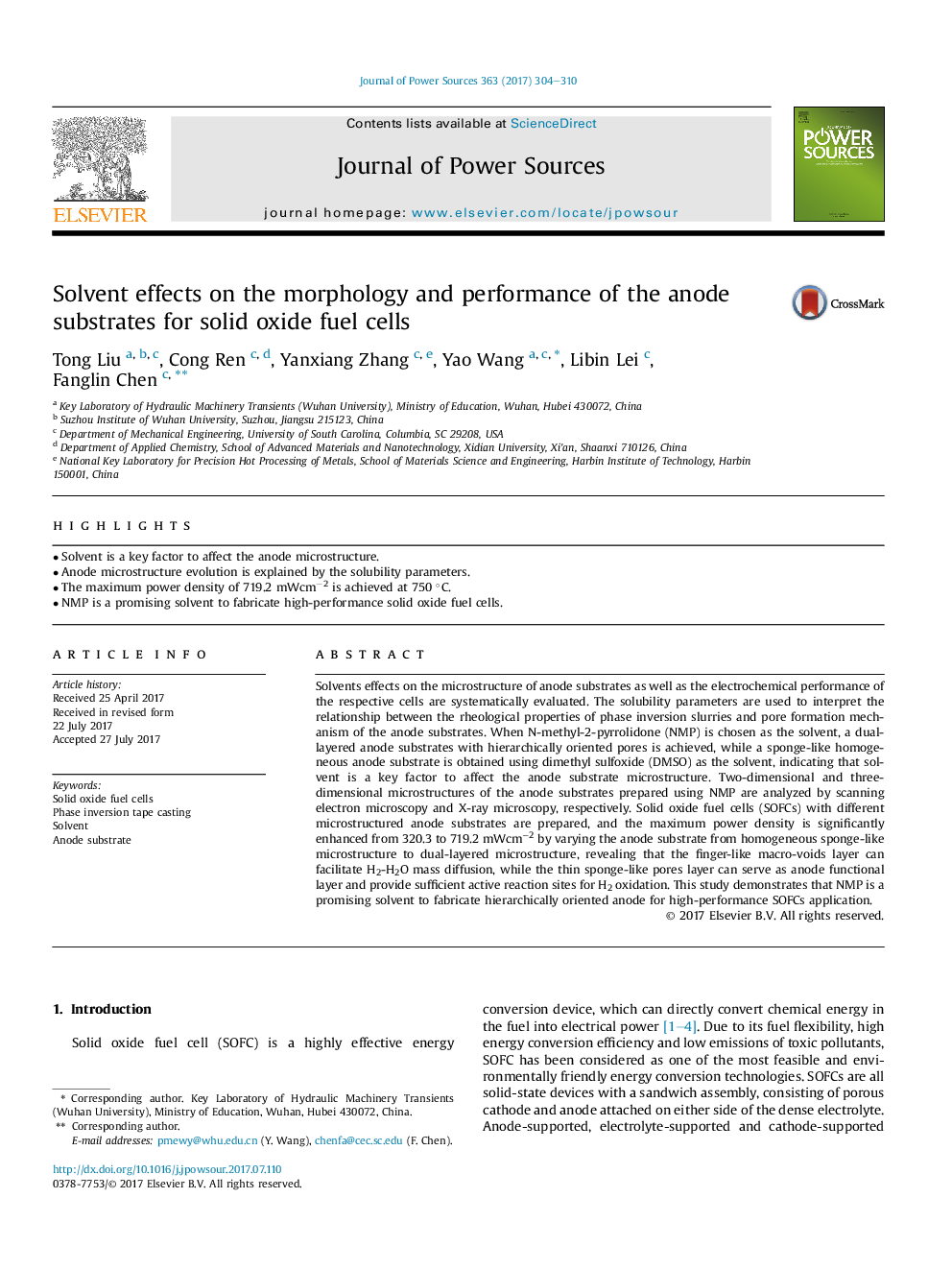| Article ID | Journal | Published Year | Pages | File Type |
|---|---|---|---|---|
| 5148632 | Journal of Power Sources | 2017 | 7 Pages |
Abstract
Solvents effects on the microstructure of anode substrates as well as the electrochemical performance of the respective cells are systematically evaluated. The solubility parameters are used to interpret the relationship between the rheological properties of phase inversion slurries and pore formation mechanism of the anode substrates. When N-methyl-2-pyrrolidone (NMP) is chosen as the solvent, a dual-layered anode substrates with hierarchically oriented pores is achieved, while a sponge-like homogeneous anode substrate is obtained using dimethyl sulfoxide (DMSO) as the solvent, indicating that solvent is a key factor to affect the anode substrate microstructure. Two-dimensional and three-dimensional microstructures of the anode substrates prepared using NMP are analyzed by scanning electron microscopy and X-ray microscopy, respectively. Solid oxide fuel cells (SOFCs) with different microstructured anode substrates are prepared, and the maximum power density is significantly enhanced from 320.3 to 719.2Â mWcmâ2 by varying the anode substrate from homogeneous sponge-like microstructure to dual-layered microstructure, revealing that the finger-like macro-voids layer can facilitate H2-H2O mass diffusion, while the thin sponge-like pores layer can serve as anode functional layer and provide sufficient active reaction sites for H2 oxidation. This study demonstrates that NMP is a promising solvent to fabricate hierarchically oriented anode for high-performance SOFCs application.
Related Topics
Physical Sciences and Engineering
Chemistry
Electrochemistry
Authors
Tong Liu, Cong Ren, Yanxiang Zhang, Yao Wang, Libin Lei, Fanglin Chen,
